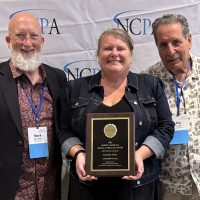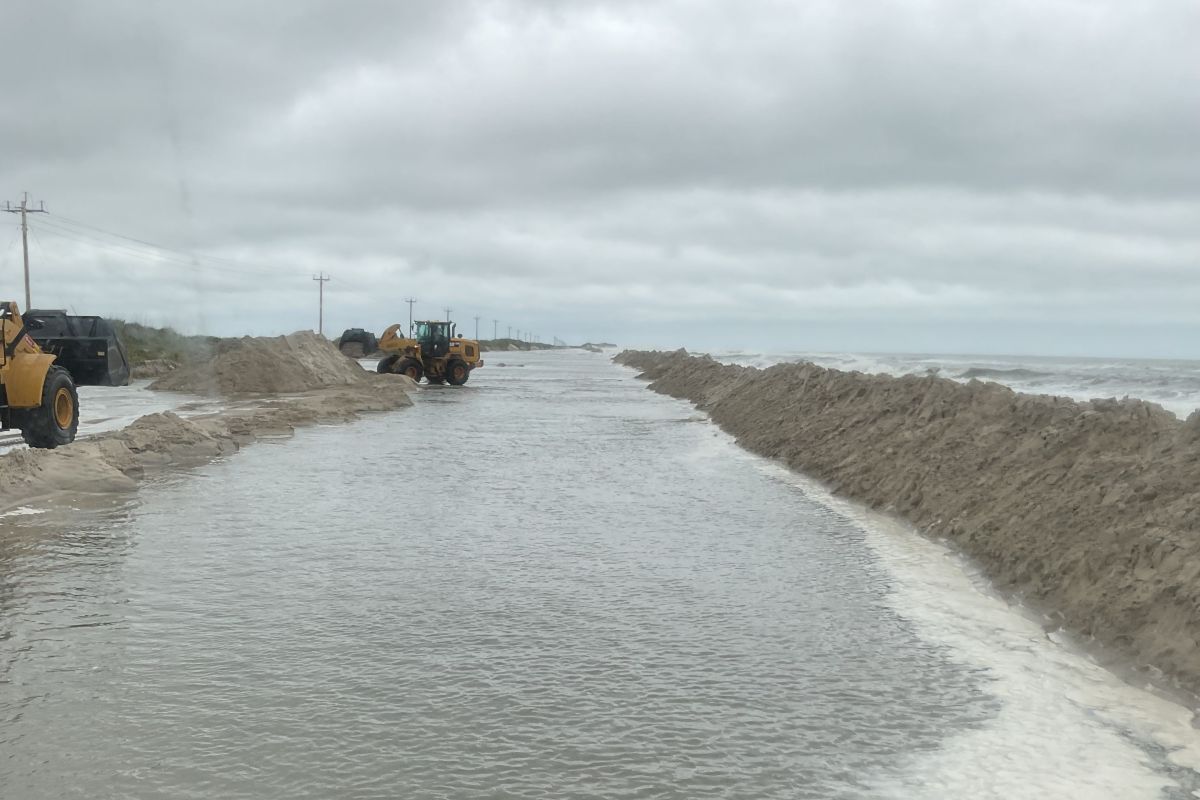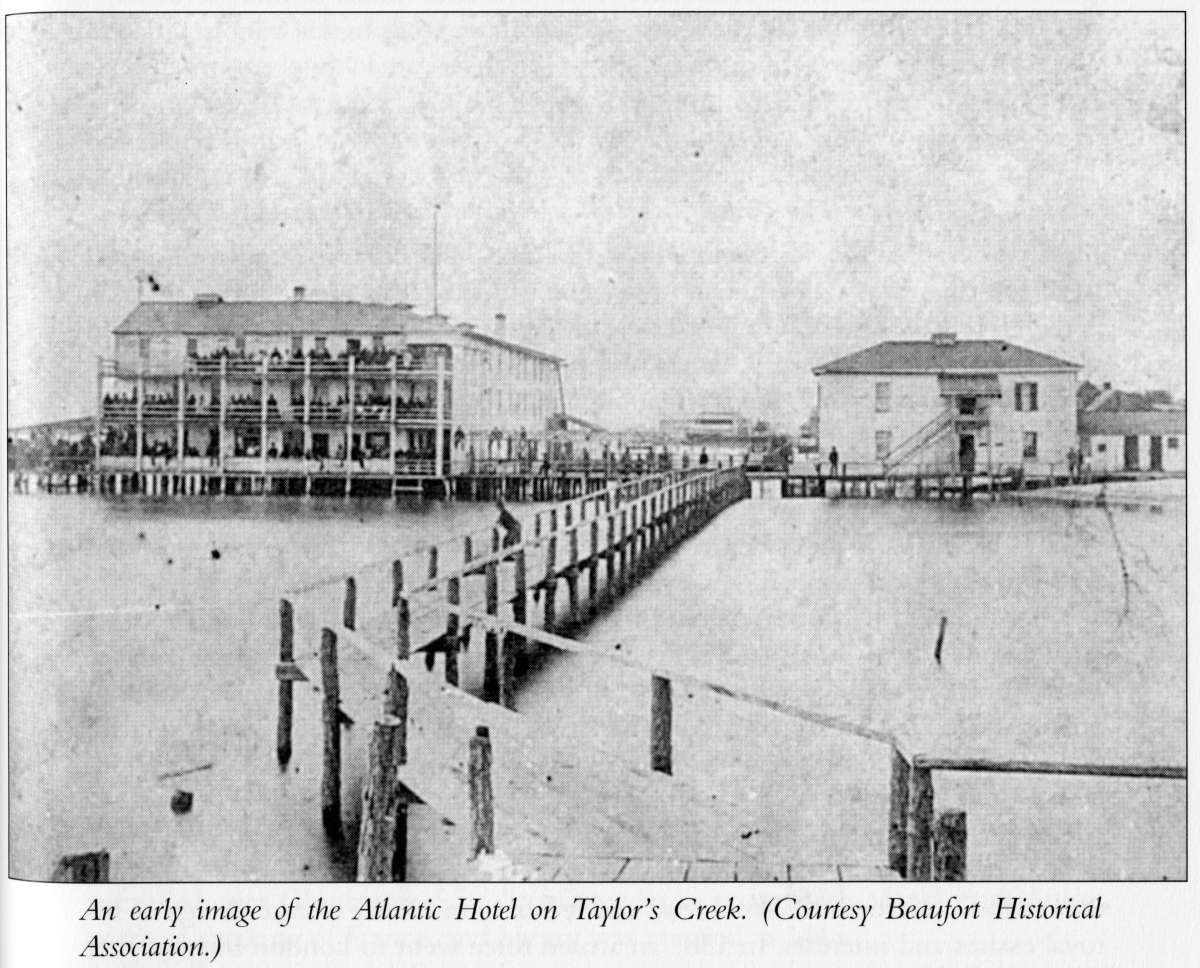Reprinted from The Coastal Society Bulletin
 Residents of River Run volunteered their time to build the rain garden. |
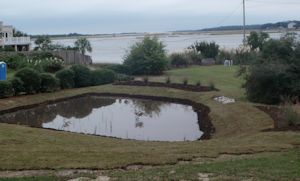 The finished product of their efforts. |
It’s fair to say that some of the folks who live along the Lockwoods Folly River in Brunswick County are a little crazy. Specifically, the residents of Winding River and River Run Plantation neighborhoods are crazy — about clean rivers and sounds, native plants and healthy oysters and fish.
Because of their passion for the environment, these residents were the perfect partners for the N.C. Coastal Federation’s low-impact development (LID) project in the Lockwoods Folly watershed.
Supporter Spotlight
Polluted stormwater runoff is the number one source of surface water pollution in North Carolina. Traditional development patterns have long approached stormwater management as a drainage problem, with neighborhood designs most often moving stormwater runoff directly to ponds or through pipes and along curbs and gutters. The untreated runoff ultimately found its way into the closest streams or creeks.
LID projects encompass a wide range of new practices that are designed to protect water quality while still achieving residential or commercial development goals. Unlike traditional practices, neighborhoods that incorporate LID measures focus on “disconnecting” the runoff from houses, parking lots and streets. Instead of sending it directly to the nearest stream, LID designs encourage this rainwater to flow over and through vegetated swales and into rain gardens or wetlands, allowing the polluted water to be absorbed by the plants and soak into the ground, where it can be cleaned by the soil and plants.
In the case of the Winding River and River Run subdivisions, initial design and construction of the area near the community marinas resulted in significant amounts of polluted runoff from neighborhood roads flowing directly down the community boat ramps and into the Lockwoods Folly River, a haven for swimming, fishing, harvesting oysters and clams and water sports.
The Brunswick County projects were led by the federation, in partnership with the Brunswick County Soil and Water Conservation District, the Brunswick County Engineering Department, and the N.C. Cooperative Extension Service.
Working in partnership with expert stormwater engineers, contractors, native plant landscapers and the residents of Winding River and River Run Plantation subdivisions, the federation developed a strategy to redirect stormwater runoff in the area away from the drainage swales and pipes leading to the river. Instead, limited re-grading of the grounds allowed for rainwater to flow through grassy swales and into one of two large rain gardens, or bio-retention areas, that were built at each of the neighborhoods.
Supporter Spotlight
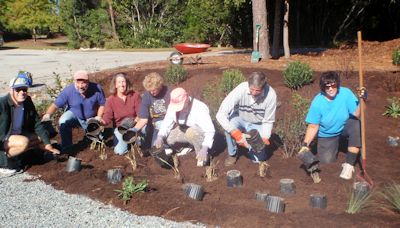 Winding River residents put the finishing touches on their rain garden. |
The initial design and construction of the naturally vegetated gardens was partially funded through the Conservation District’s Community Conservation Assistance Program, which shares the costs of community projects that restore or protect water quality. Initial funds were also provided through the North Carolina Attorney General’s Environmental Enhancement Program. The Coastal Society’s Board of Directors also donated to the projects.
Although the re-grading and garden areas were shaped by professional contractors, residents from both neighborhoods provided match money and all of the “sweat equity” needed to plant a diverse array of plants and shrubs, and later to maintain the gardens in beautiful form. Residents donned chest waders to plant hundreds of native plants in the gardens and then worked over the next year to pull weeds, add mulch and add or replace plants. Gardening gurus in each neighborhood worked with the federation and landscaping professionals to develop a list of native plants that were low maintenance, adapted to the sometimes harsh environment of southeastern North Carolina and added beauty to the landscape.
The projects are completed and are successful, working gardens, capturing and treating nearly all of the polluted runoff that formerly flowed from neighborhood streets down the boat ramps and into the river. While they are known by many visitors as the marina “nature gardens,” they provide examples of how incorporating natural design elements into our neighborhoods can be a beautiful addition to the landscape and protect or restore our treasured estuarine waters.

